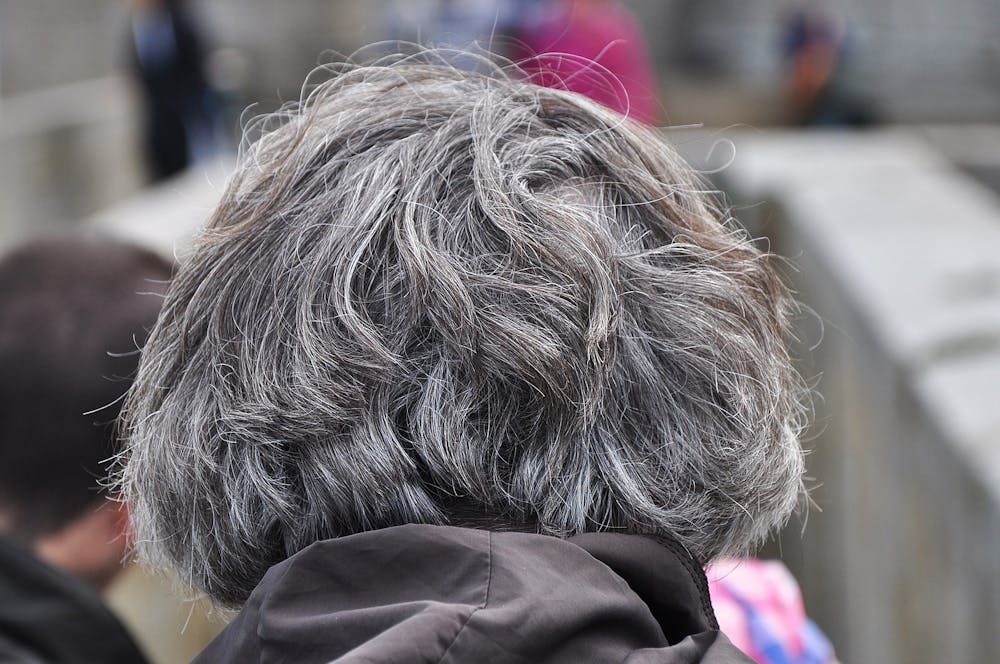With the semester coming to an end, we bring you The News-Letter’s final look of the year at some of the incredible science news from this past week. From nanowire brains to the origins of gray hair, we hope you enjoy this rundown, and we can’t wait to return with more science news in August!
Nanowire networks display higher-order cognitive function
An international group of researchers has recently published a paper in Science Advances about a physical nanowire network that can store short- and long-term memories. This suggests that brain-like function may be a physical phenomenon and that non-biological devices can simulate human-like intelligence.
The nanowire network consisted of thin wires (“neurons”) and connections between different wires (“synapses”), analogous to the microscopic brain architecture.
A common psychological test, the “n-back task,” was used to assess the device. The test typically involves sequentially flashing images or reciting words to the human participant and assessing how far back the participant can recall.
To apply it to the nanowire network, instead of images or words, the researchers applied different voltages between the two ends of the network, each voltage meant to represent a different “word” the network will remember. Each voltage is encoded as a “memory” based on the strength of certain nanowire pathways over others, in a method strikingly similar to the current gold-standard theory for human memory. The researchers found that the nanowire network could remember a desired “word” after seven voltage changes, which is the average human score.
AI generates new proteins
Scientists at Massachusetts Institute of Technology and Tufts University have developed an artificial intelligence (AI) model to design de novo proteins not observed in nature.
Proteins can be used in many different applications, such as creating hormones and building and repairing muscle, as governed by their physical properties. However, finding proteins with desired physical properties can be difficult at best and impossible at worst. Thus, designing proteins with tailored characteristics is important. For example, protein design is used in the synthetic materials field to create human-safe food coatings.
The AI model is tailored to understand protein biochemical and amino acid sequence-to-structure relations to produce new proteins. The model is also able to design “bio-inspired” proteins that may have certain desirable characteristics of known proteins while displaying novel functions or structures.
Graying hair caused can be caused by stuck stem cells
A team at the New York University Grossman School of Medicine has conducted a study investigating melanocyte stem cell (McSC) population dynamics.
Stem cells are precursors to different cell types. As they replicate, they can either form other stem cells or specialized cells responsible for specific functions. McSC maturation helps control hair color. Specifically, they are able to move back and forth within different compartments for hair follicle development and receive protein signals to mature.
However, as hair ages and regrows, McSCs get trapped in one compartment and lose their mobility. This decreases the probability that they obtain a maturation signal and develop into pigment cells that keep the hair pigmented. In this mice-based study, the number of lodged McSCs rose from 10% to 50% after forced hair aging.
If the results are translatable to humans, it suggests a new modality to prevent graying hair: reestablishing the mobility of McSCs.
Turning proteins on and off using light
Researchers at the University of Washington School of Medicine have developed a new technology called “SpyLigation” to control protein function using light. Complementary linkers attached to two different protein fragments can be irreversibly combined (with a covalent bond) to form a whole functional protein. Using directed light can further control which proteins become activated.
In the paper, controlled laser-based activation on a gel-like mixture of luminescent protein fragments was used to etch different images. The technology even worked in human cells, and thus may be used to increase the specificity of genome engineering.
Such space and time control for protein activity could be useful for regenerative medicine and tissue transplantation, the authors claim.





